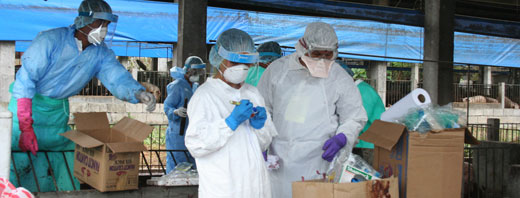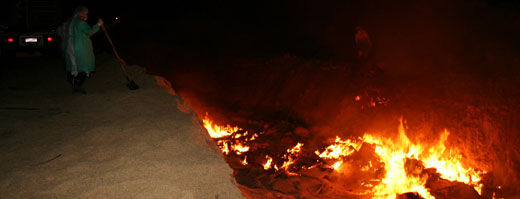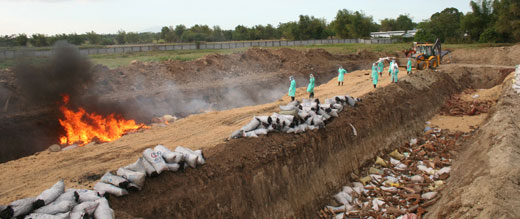The Ebola Reston Virus has previously been detected in the Philippines during outbreaks in macaque monkeys in 1989-90, 1992 and 1996. The virus strain is the fifth of five identified subtypes of Ebola virus. The other four, namely Ebola Zaire, Ebola Sudan, Ebola Ivory Coast and Ebola Bundibugyo, are known to be fatal and could be transmitted from non-human primates to humans. They were associated with the Ebola Hemorrhagic Fever outbreak in Africa that registered a mortality rate of 25-90% of affected cases. Ebola viruses are normally transmitted via contact with the blood or other bodily fluids of an infected animal or person. In the Philippines, only a small number of individuals exposed to the sick animals tested positive for antibodies to ERV. Only one individual showed mild, flu-like symptoms.
The test was an offshoot of the disease outbreaks in 2007 and 2008 where pig mortalities were high. The Department of Agriculture sent samples to an international reference laboratory at Plum Island, New York to determine the specific organism causing the outbreak. The results confirmed that the pigs were infected with a highly virulent strain of PRRS as well as the ERV.

Collection of samples for ERV monitoring
The swine practitioners and government veterinarians expected an infection of PRRS, Swine Influenza, Circovirus and Hog Cholera but were surprised to learn that ERV was also detected. It was the first isolation globally of ERV in pigs.
In early January, a team of experts from the United Nations World Health Organization, Office International des Epizootics, and the Food and Agriculture Organization arrived in the Philippines to assist in investigating the case. The affected farms that were already placed earlier under quarantine were subjected to further sampling and testing. The Bureau of Animal Industry put up checkpoints and strictly monitored pig movements. The Center for Disease Control and Prevention in the United States, however, announced that while most of the samples they collected tested negative, 19 pigs in a Bulacan farm were positive for the PCR test indicating the presence of the virus. This prompted a recommendation of destruction of all pigs at the said farm. As a result, the DA-BAI implemented the destruction of more than 6,000 pigs in March. The carcasses were burned and buried within the premises of the farm.

Burning of carcasses
The Ebola scare when announced in December had no effect on demand, and market prices showed a considerable increase compared to the same period in 2007. However, the destruction of all the pigs from a Bulacan farm, and the wide media coverage of this, eventually affected the Luzon market as demand for pork slowed down thereby reducing the ex-farm price of finisher pigs. From a high of Php 114 (€1.78) per kilo liveweight at the start of 2009, prime hog price is now down to Php 96 (€1.50) per kilo in most areas of Luzon. The Philippines’ first ever export of pork also did not materialize. The DA had to stop the shipment of 50,000 tons of pork to Singapore scheduled in December 2008. The DOH and DA, together with the UN team, however, had allayed the fears of the predominantly pork eating population by stressing that the situation is low risk to human health and issued the following guidelines to curb the spread of ERV. These are: the immediate reporting of suspicious deaths of pigs; reporting and confiscation of “double dead” meat; proper handling of meat; and proper cooking of meat, preferably at high temperatures.

Over view of depopulation pits




